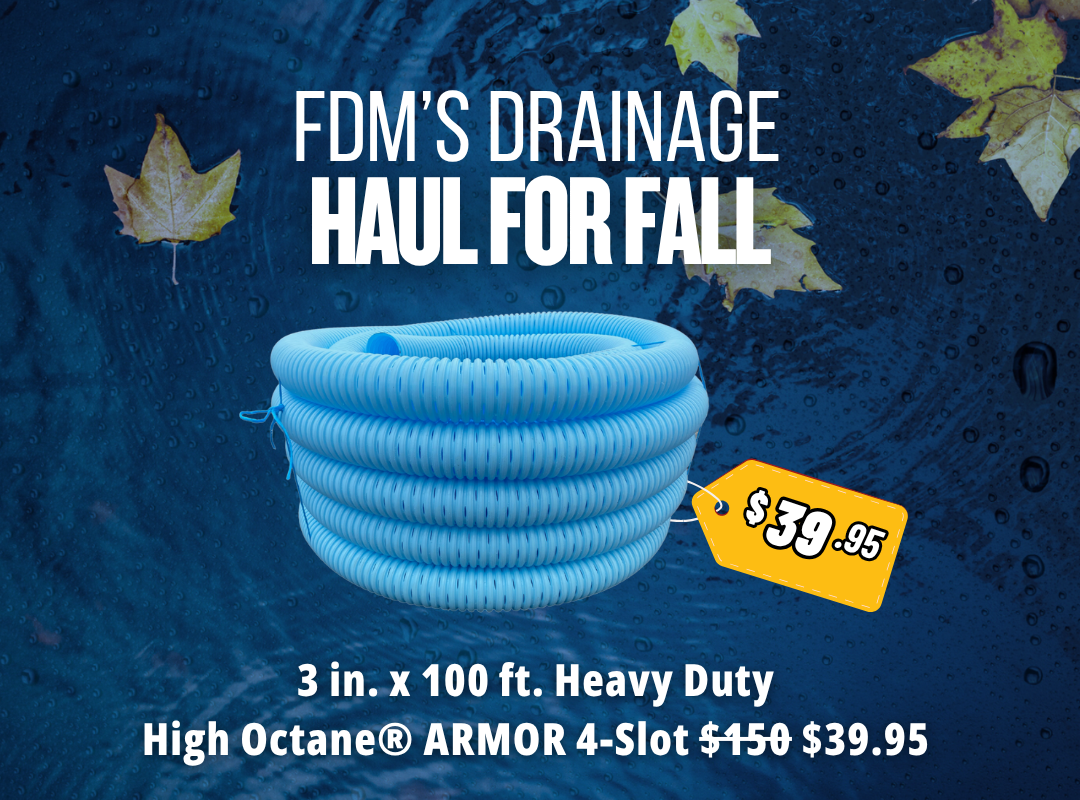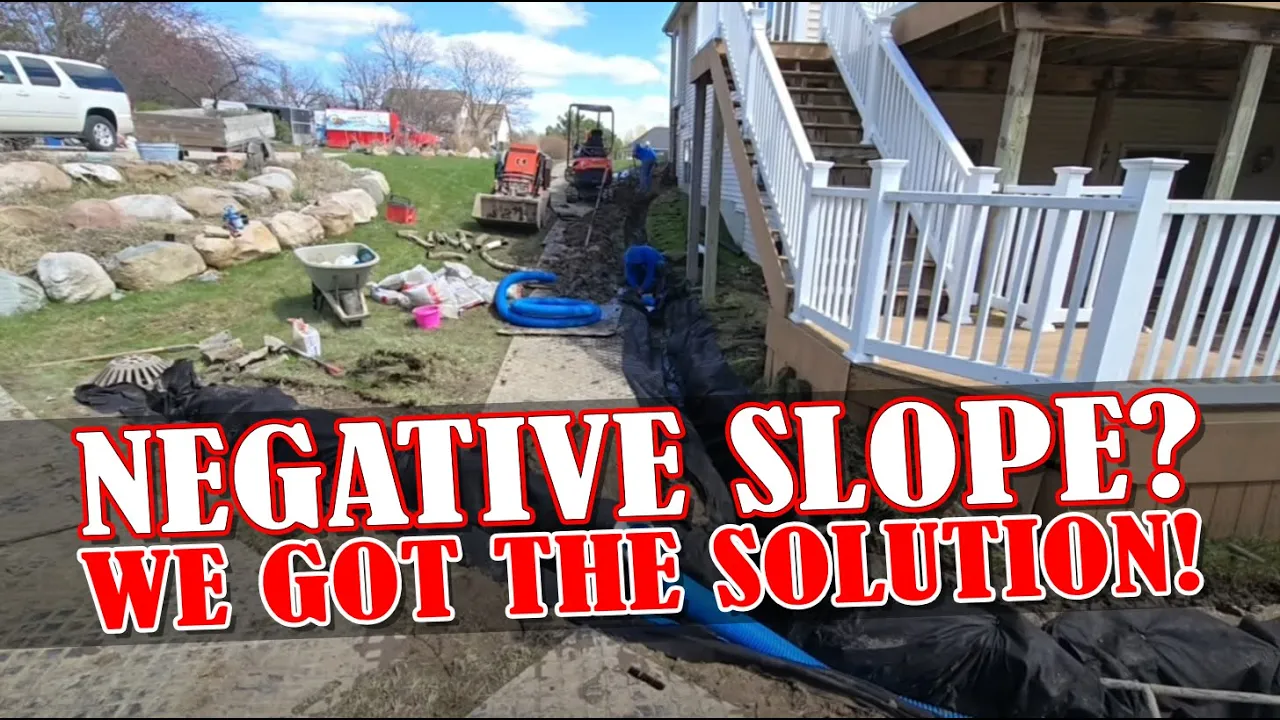How to Build the Best Drainage System for Extreme Water Conditions
 I want to talk about gravel French drain systems versus all the alternatives. I want to talk about our gravel French drain systems in particular, where we do not use any inlet basins, why they are so effective and why they are the only way to build a drainage system in extreme water conditions.
I want to talk about gravel French drain systems versus all the alternatives. I want to talk about our gravel French drain systems in particular, where we do not use any inlet basins, why they are so effective and why they are the only way to build a drainage system in extreme water conditions.
So let me show you how you do a job right when you’re dealing with sheet water and surface water.
If you watch my videos, or you subscribe to my channel, you know I’m not a fan of the peanut pipe. Surface water is what we’re dealing with most of the time and it doesn’t handle surface water well and especially when it’s not installed well. So here we have sheet water, we have all this rooftop sheet water nonpermeable surface collects and comes down to the driveway. Then all this concrete is nonpermeable, so when it’s raining hard, you literally have a sheet of water. That’s where the term comes from. When you have a sheet of water that is the toughest water to control.
We ditched out a really nice trench, removed a lot of soil here, really, really removed a lot. We’re going to put a lot of stone and this is going to be an open French drain and as you can see by the geotextile non woven fabric, we’re going to wrap this. This is going to be contained, the subsoils not gonna mix with a stone and the stone won’t mix with the subsoil because we have a soil separator.
We’re then gonna, put some good drainage fabric down here and top dress this whole side of the house in drainage stone. All the sheet water that’s coming off of here and high concentrations, we stepped this up to a six-inch pipe. A six-inch pipe is capable of moving 550 gallons per minute and the stone will also move additional water. So here’s our six-inch yellow with the really, really deep saw cuts. We can get away with those big deep saw cuts because we use a large aggregate. We don’t use the really fine piece stone, you know the pebbles, we use a larger aggregate and it’s washed. All the stone that we use it, it gets ran through a wash plant, so there’s no debris.
This is the proper way of installing an open French drain system for surface water. You don’t want any inlet basins and you don’t want to put the soil that has poor percolation back on top of the system. I see it done time and time again and that’s why these systems work so poorly. One-third of the work that I do is to replace failed French drain systems or failed yard drain systems. That’s upsetting because people paid their hard earned money to have a contractor that they put their trust in to build them a system that didn’t go very far. Got them a couple of years, and that’s it.
For a residential yard drain for French drains for some pump systems, for lift stations, for outdoor drainage of all types in southeastern Michigan, give us a call at 248-505-3065.








